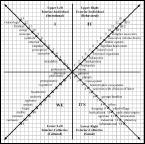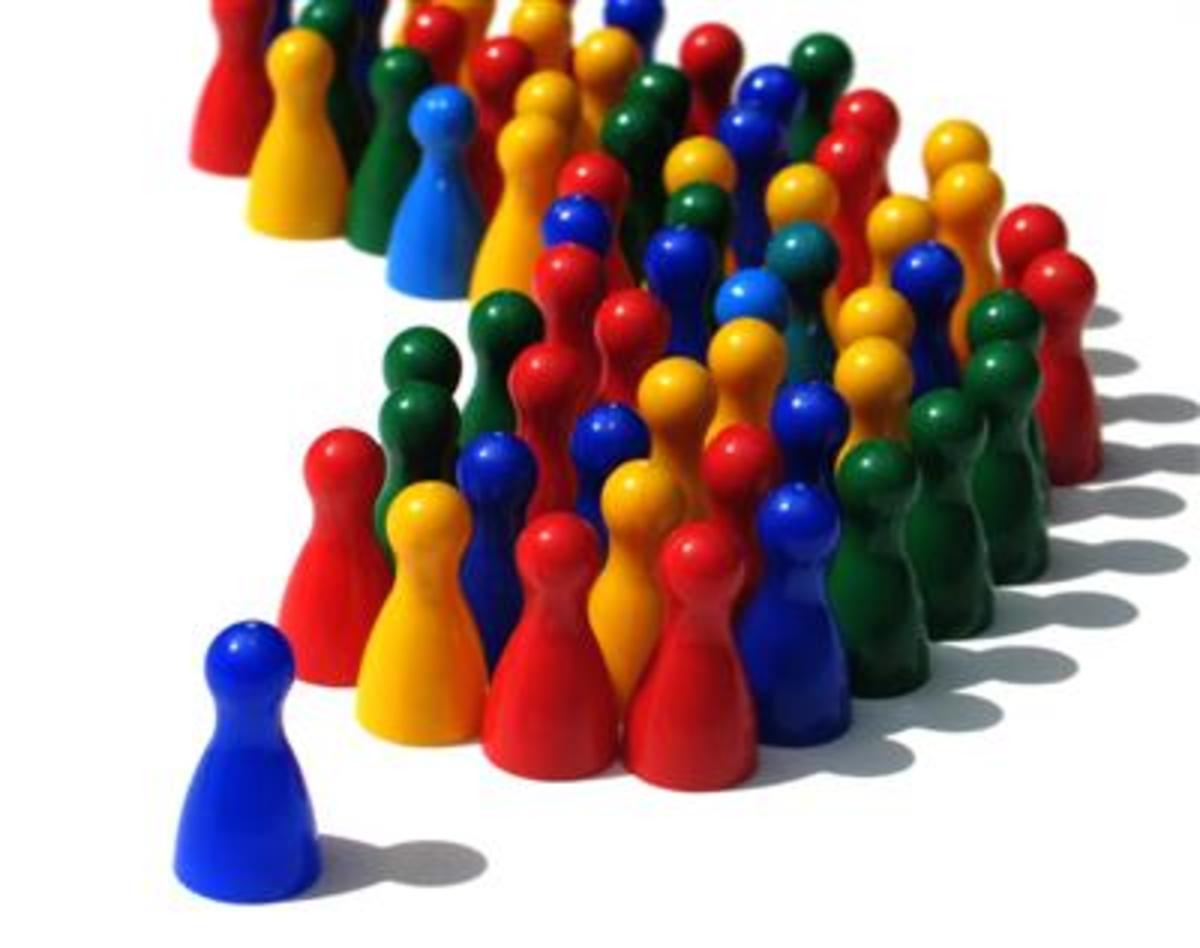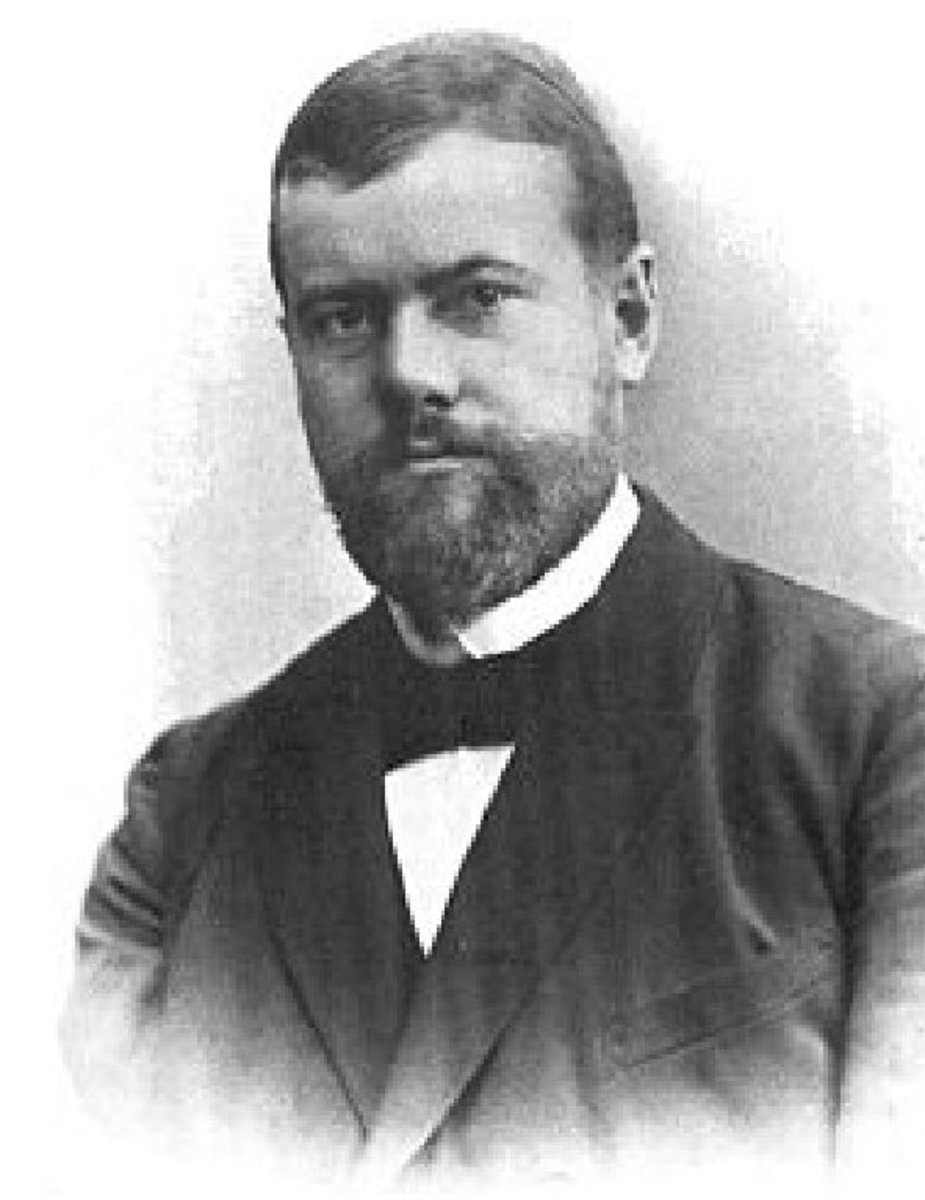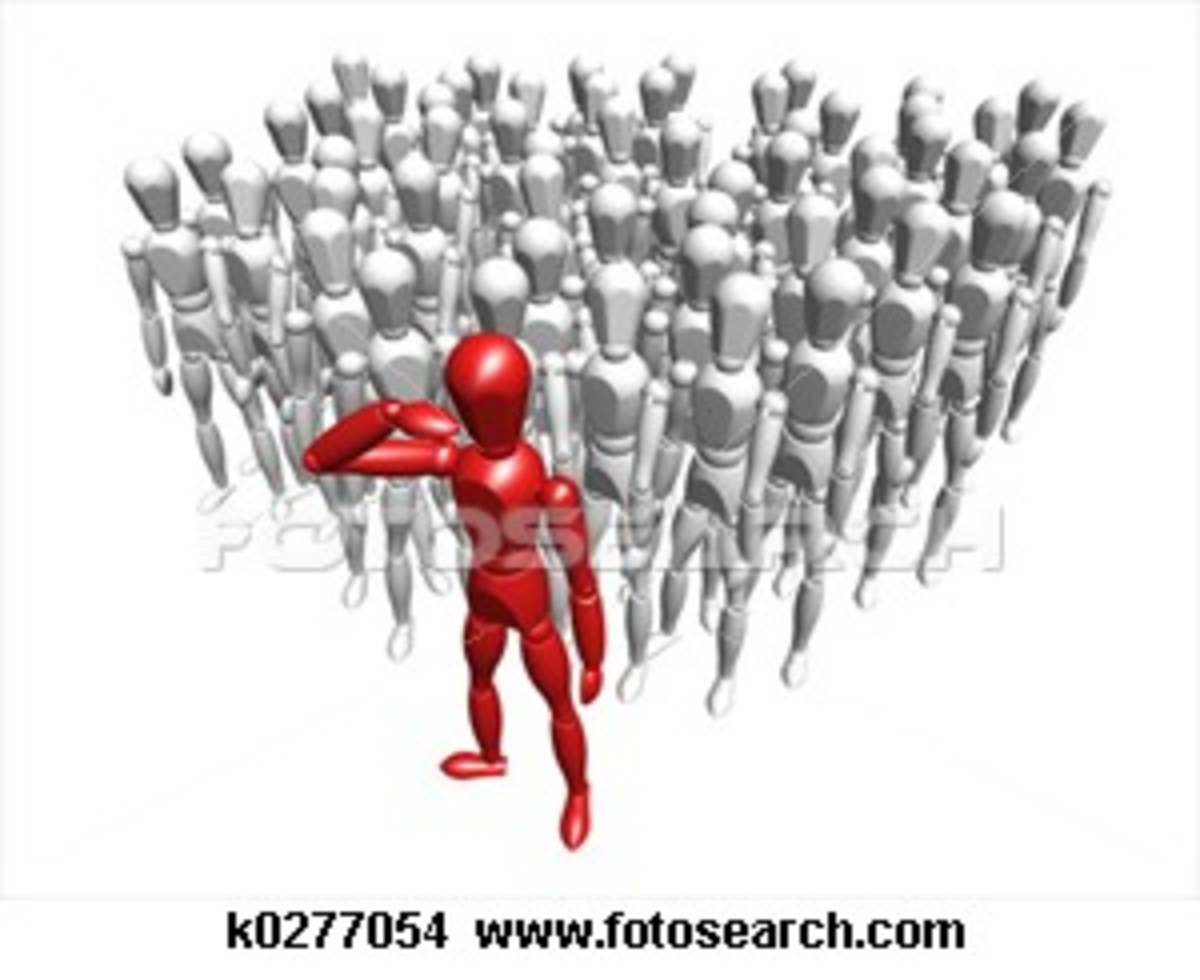Integral Systems and How They Relate to Organizations and Leadership

This hub presents a basic discussion of the integral system construct and how it relates to organizations and leadership. In order to accomplish this task, this presentation proceeds by examining the nature of a system, systems thinking, and the integral systems construct and then demonstrates how the integral systems construct relates to organizations in general and leadership within organizations in particular. To begin, what are a system, systems thinking, and integral systems construct?
What Constitute a System, Systems Thinking, and the Integral Systems Construct?
Life is an intricate web of wholes and their constituting parts, a complex network of interactions and relationships on multiple levels of existence (Senge, 1990; Wheatley, 2006; Wilber, 2000). Each whole can be referred to as a system. This section discusses the definition of a system; systems thinking; and the relatively recently devised integral system construct.
The definition of a system
McNamara (2006) defined a system as a collection of parts (or subsystems) integrated to fulfill a particular purpose or objective. Systems have inputs, processes, outputs, and outcomes, with ongoing feedback among these various parts, so that when one part of the system changes the nature of the system changes. Systems range from very simple to very complex and come in numerous types – e.g. biological, mechanical, human/mechanical, ecological systems, and social systems.
University of Twente highlighted that a system consists of four things.
1. Objects – the parts, elements, or variables within the system. These may be physical or abstract or both, depending on the nature of the system.
2. Attributes – the qualities or properties of the system and its objects.
3. Internal relationships among its objects.
4. Particular environments. (p. 1)
“A system, then, is a set of things that affect one another within an environment and form a larger pattern that is different from any of the parts” (McNamara, p. 1). In light of this definition of a system, what is systems thinking?
Systems thinking
Systems thinking is a way of understanding reality that emphasizes the relationships among a system's parts, rather than the parts themselves (Pegasus Communications, p. 1). Speaking about systems thinking in examining social societies, Flood (1999) wrote
We can only meaningfully understand ourselves by contemplating the whole of which we are an integral part. Systems thinking is the discipline which makes visible that our actions are interrelated to other people’s actions in patterns and behaviors and are not merely isolated events. (p. 2).
However, Kerlinger and Lee (2004) point out that traditionally, while behavioral research may be concerned with “the multivariate complexity of psychological, sociological, and educational reality,” scientists are only concerned with what they can empirically observe and measure and not with ‘metaphysical explanations’ of phenomena. Wheatley (2001) noted that relatively new insights from quantum physics render the traditional “Newtonian” approach as inadequate to explain the complexity of life and reality in the age of globalization and called for a new paradigm for observing and explaining phenomena. Wilber (2000) attempted to set forth such a new paradigm with his recently devised integral system construct.
The Integral System Construct
From his own extensive research, Wilber (2000) postulated a new way to look at the phenomena in the universe through what he called the Theory of Everything in which he sets forth the integral system construct. The following is a brief description of the background behind Wilber’s integral system construct and his integral map.
The background of the integral system construct. Following the death of his wife, Wilber (2000), an evolutionary psychologist, commenced a three-year personal quest of discovery in which he examined and contemplated all the known structures and social systems of the universe. During this type of deep reflection on the nature of the universe and its parts, Wilber came up with “an integral philosophy that would weave together the many pluralistic contexts of science, morals, aesthetics, Eastern as well as Western philosophy, and the world’s great wisdom traditions.” He observed that all systems of life and human consciousness are a set of arranged hierarchies emanating from the most simple of structures or organisms and building to systems of greater complexity. From these observations, he devised what he called an integral vision of human possibility on the level of orienting generalizations and plotted out an integral map of existence in which he set forth a full spectrum approach that touches on all aspects of life e.g. psychology, sociology, anthropology, business, politics, science, religion, etc..
Wilber’s integral map of human possibilities. A map of Wilber’s (2000) integral system is shown in the picture above. The map is broken into four quadrants relating to four levels of human possibility discovered by Wilber during his three year time of examination and contemplation. The integral map is divided between the individual and collective levels along the horizontal axis and the internal and external levels along the vertical axis so that (a) self and consciousness or the intentional (the individual - internal) is placed in the upper left hand quadrant; (b) brain and organism or the behavoial (individual – external) in the upper right hand quadrant; (c) culture and worldview (collective – internal) in the lower left hand quadrant; and (d) social system and environment (collective – external) placed in the lower right hand quadrant. Without going into all the further details of the Wilber’s integral vision, the map demonstrates that the integral system construct takes into account much of what constitutes life and existence and how each level of existence from simple to complex affects individuals and collective groups in profound ways. Furthermore, Wilber’s integral system construct shows that the behaviors of individuals and organizations can only be understood when all their constituting aspects are taken into account e.g. culture, education, religious beliefs, home environment, past victories and defeats, etc.
How Integral Systems Relate to Organizations and Leadership
It has been suggested that never before in the history of the planet have the myriad of cultures and cultural preferences from the four corners of the globe come in such close proximity as the dawning of the 21st century (Wilber, 2000; Crawford, 2009; Prewitt, 2004). As Wilber pointed out, “We live in an extraordinary time: all of the world’s cultures, past and present, are to some degree available to us, either in historical records or as living entities. In the history of the world, this has never happened before” (p. 1).
This coming together has affected both social societies and the business world including business organizations and leadership. Crawford (2009) wrote
Today, globalization metastasizes at unprecedented speed as the business leader is thrust into a virtual land of prosperity and peril. The once homogeneous cultures of the world are challenged by the introduction of preferences, tastes, and values from a new world of customers and employees. (p. 1).
Organizations as Integral Systems
Prewitt (2004) posited that, in the age of postmodernism and the subsequent age of globalization, organizations are “recognized as increasingly complex, networked, emotional, and chaotic” (p. 328; Wheatley, 2006). As organizations are increasingly complex, Prewitt observed
Organizations navigating these times require flexibility, shared mental models, quick responsiveness, and mutual accountability. They need sophisticated, adaptive, empowered workers in a fractal organizational structure rather than mindless drones waiting for decisions to be made by a command-and control bureaucracy. (p. 328).
Thus, success for organizations in the age of global mobilization is tantamount to each organization’s ability to devise an organizational model that integrates their workforces as knowledge-based systems, taking into account the varied backgrounds, breadth of knowledge, and experience of those within their ranks (Tsoukas & Mylonopoulos, 2004).
Wilber’s (2000) integral system construct presents such a model in that it takes into account much of the constitutive aspects of the organization on an (a) individual and collective and (b) internal and external levels that impact the day to day operations of a given enterprise. In writing of Wilber’s integral system, Haladay (2006) demonstrated that on the organizational level “changes in organizational structure (lower-left quadrant) affect organizational culture (lower-right quadrant) by defining the opportunities for employee growth and development” (p. 26). Furthermore, as opportunities are defined or re-defined, the organizational culture will be affected, impacting each stakeholder’s self-perception and cognitive awareness (upper-left quadrant) which in turn will impact each stakeholder’s outward behavior (upper-right quadrant). How does such an integral system impact leadership?
Integral systems and leadership
As the business world has become a complex network system, Haladay (2006) noted
Current researchers in the field of leadership development have posited that the business world of the 21st century requires new leadership perspectives and a greater understanding of higher-order skills that enable leaders to see and manage the underlying web of global interconnectivity of their organizations. (p. ii).
To this end, Wilber’s integral system construct highlighted for organizational leaders many of the variables to be taken into account when devising a leadership strategy. Mostly the integral system outlined a comprehensive approach to leadership in that it takes into account internal and external factors that impacted organizations at the dawn of the 21st century on both an individual and collective group level. Along these lines, Prewitt (2004) highlighted that integral leadership involves
1. Understanding the power of organizational culture.
2. Using storytelling for developing a shared reality.
3. Orienting towards humanistic theories of leadership.
4. Being acquainted with the notion of emotional intelligence.
5. Taking ethics leadership beyond the superficial.
6. Focusing on integrating the soul with the worker. (p. 329).
Conclusion
It seems that never before had so many people from so many countries and ethnic groups intermixed together as at the dawning of the 21st century also known as the age of globalization. This amalgamation of cross-cultural knowledge systems and experiences brought about the challenge of integrating those from different cultural backgrounds into cohesive workforces in many places around the globe. Given the burgeoning reality of globalization, Wilber (2000) devised an integral system construct that touched on many of the aspects involved in organizing such a multinational workforce for sustainable competitive advantage. This hub presented a basic discussion of the integral system construct and how it relates to organizations and leadership.
The Kingdom of God: The Original Integral System
Ken Wilber presented his integral system as a new paradigm for the newly globalized world. However, the integral life is far from new; it is the original intent of God who created all things in the beginning of the universe. The problem is that we have come so far from the original days of God's creation and we now look at life from the other side of sin and separation,
Genesis 1 and 2 of the Christian and Hebrew scriptures describes what life was meant to be like from the beginning. Humans were created to live in harmony with God, others, and nature. However, the original humans were not content to live by God's sovereign rule and chose their own paths. This caused disharmony with God, other humans, and the rest of creation.
As men moved out from God they devised their own schemes and established their own customs and norms. Some groups retained a culture that was primarily based on God and his principles; others blocked God out and chose to invent other forms and systems of worship; still others took a little of both.
As groups became set in their ways, they became entrenched in those norms and practices and would vehemently protect them against verbal and physical attacks. Even if their ways were far from God's original intent, each group was not only willing to defend their ways, but invade other lands and force their cultural practices on others.
Today in the age of globalization and information technologies, peoples from different cultures are interacting more than ever. Some like Wilber have embraced this moment to help those peoples to dialogue and learn from each other and accept that each culture is unique and legitimate and worth accepting. It seems both reasonable and pragmatic that all the peoples should come together in peace and harmony and accept others no matter their cultural practices and no matter how far particular cultural practices stray from God's original intent.
Only the call to an integral society and world is not new and it has already been offered. It was offered at the creation of the world and reiterated when Jesus stepped out of his heavenly throne to demonstrate the norms of God's Kingdom (e.g. humility, love, compassion, righteousness, self-sacrifice) and then to make atonement for the moral shortcomings of all who ever existed. Through Jesus, God opens his arms to all peoples from every culture all over the world and asks no other requirement than to receive Jesus' sacrifice and try to live likewise.
The Kingom of God presented at the beginning of the universe and revealed by God in the Christian Scriptures is the original theory of everything and integral system.
More Hubs Related to Leadership
References
(2004). Systems Theory. University of Twente.
(2010). What’s a System?
(2010). What is Systems Thinking?
(2010). What is systems thinking? Pegasus.com.
Crawford, D. (2009). Book Review: Editor Michael Moodian’s (2009) Contemporary Leadership and Intercultural Competence: Exploring the Cross-cultural Dynamics Within Organizations. International Journal of Leadership Studies, Vol. 5 Iss. 1, 2009 © 2009 School of Global Leadership & Entrepreneurship, Regent University ISSN 1554-3145
Flood, R. L. (1999). Rethinking the Fifth Discipline. London, UK: Routledge.
Haladay; Diana, J. (n.d). Integral leadership: A case study of Dorothy Day's leadership of the Catholic Worker movement. Fielding Graduate University, Retrieved from ProQuest: ABI/INFORM Complete database.
McNamara, C. (n.d.). Thinking about Organizations as Systems.
Prewitt, V. (2004). Integral Leadership for the 21st Century. World Futures: The Journal of General Evolution, 60(4), 327-333.
Senge, Peter. Systems Thinking. Society for Organizational Leadership.
Senge, P. (1990, 1994) The Fifth Discipline. New York, NY: Doubleday.
Wheatley, M. J. (2006). Leadership and the New Science. San Francisco, CA: Berrett-Koehler Publishers, Inc.
Wilber, K. (2000). A Theory of Everything. Boston, MA: Shambhala Publications.








